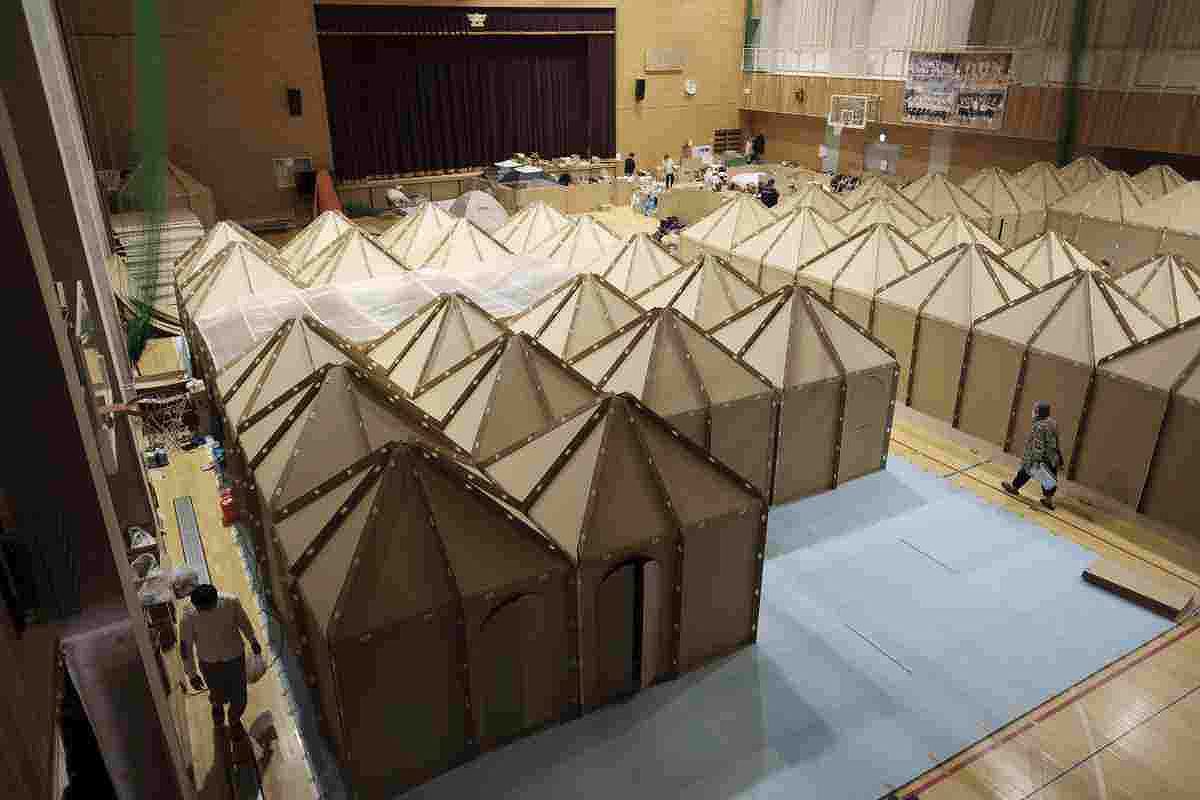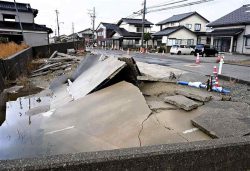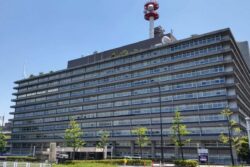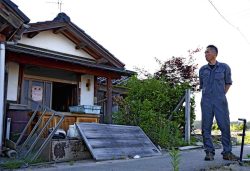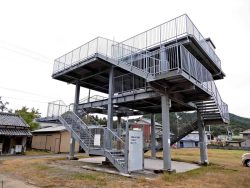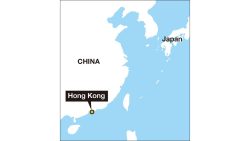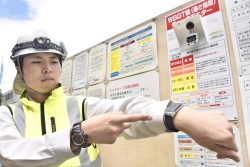Noto Quake — A Closer Look / 1 Month on, Evacuees Still Sleep on Cold Floor; Evacuation Period Expected to Continue
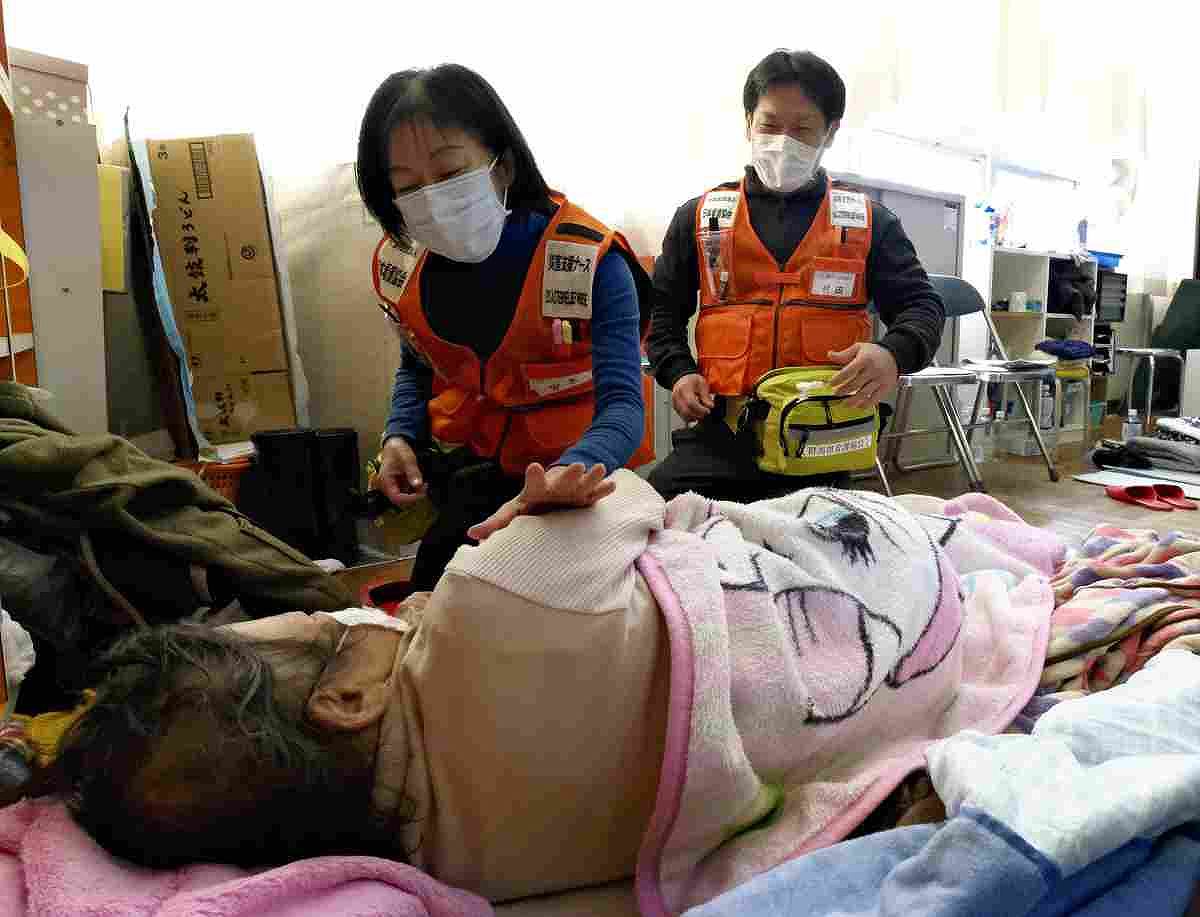
Japanese Nursing Association members in charge of disaster nursing check on the physical condition of an elderly person at an evacuation center in Wajima, Ishikawa Prefecture, on Jan. 27.
21:00 JST, February 2, 2024
Four weeks have passed since the Noto Peninsula Earthquake, and many people are still sleeping together on thin mats on the gymnasium floor at evacuation centers. There are no partitions to protect their privacy, and cold air comes in every time someone opens the door to go to the bathroom at night.
Kumamoto Gakuen University Prof. Hideaki Takabayashi winced when visiting a shelter set up in Wajima, Ishikawa Prefecture, on the day for support.
The professor, who specializes in social welfare, had also visited the shelter two weeks ago and found that the environment has not improved much since then. More stoves were set up, but there were still not enough cardboard beds to protect the floors from the cold air. Vegetables and other perishable foods were scarce, and elderly people were consuming instant noodles down to the soup in the morning.
“There is a lack of volunteers and staff who listen to and coordinate the needs of the victims dutifully,” said Takabayashi, who supported evacuees during the 2016 Kumamoto Earthquake. “It will be difficult to prevent disaster-related deaths if this situation continues.”
At another shelter in the city, evacuees were sleeping on mattresses on the floor.
“I feel a draft coming in, and it’s cold at night. I feel stress from living in a group, too” a 52-year-old evacuee said. “I wonder how long this life will continue.”
A disaster relief nurse, 38, said, “Some people have lost muscle strength from sitting still and have become unable to go to the bathroom by themselves.”
Lessons learned from past
Immediately after the earthquake, lessons from past disasters were put to good use in some situations to prevent similar deaths from occurring.
The Japanese Association of Dialysis Physicians established an information network following the 1995 Great Hanshin Earthquake, and it was used to quickly confirm that six medical institutions in areas hit by the Noto quake were unable to provide dialysis services.
Based on this information, Disaster Medical Assistance Team (DMAT) transported about 400 dialysis patients to medical institutions in southern Ishikawa and Fukui prefectures between Jan. 2-4.
DMAT also transported about 850 people — including those with dementia and bedridden people — staying in elderly care facilities to safe facilities in and outside of Ishikawa Prefecture.
“We needed to transport elderly people whose lives were in danger in the harsh environment of the disaster area,” Hisayoshi Kondo, deputy director general at the DMAT office, said.
Medics who joined disaster relief efforts also played an active role in preventing the spread of infections within evacuation centers.
However, the evacuation period is expected to continue, and relief operations are heading into a crucial stretch to halt the increase in disaster-related deaths
Mental health care
Mental health care for disaster victims has been an important issue and will continue to be in the future.
A follow-up study mainly conducted by Tohoku University after the 2011 Great East Japan Earthquake found that people who were living in tsunami-hit coastal areas were more likely to suffer from depression even after several years from the disaster, compared to those living in inland areas.
The tendency to withdraw from society due to depression can lead to physical problems. Among the disaster-related deaths from the Kumamoto Earthquake, suicide accounted for 19 of them.
At Kinikyo Wajima Clinic in Wajima, many patients burst out talking about their disaster experiences when they were examined. Director Satoru Yamamoto said: “Some of them smile when they finish talking about their painful experiences. We want to pay attention not only to physical illnesses, but also to the mental health of the victims.”
An 80-year-old evacuee in the town of Noto said she has started waking up after only a couple hours of sleep. She does not want to leave the town she grew up in and also does not know where she will live next. “I don’t know where I can go,” she said.
Some people suffer from stress even in secondary evacuation centers. Kaga, a city in western Ishikawa Prefecture, accepted about 1,800 people evacuated from the Okunoto area on the peninsula’s northern tip and elsewhere. The city’s counseling and support section chief, Miki Nishi said: “We are receiving consultations from people who have insomnia and anxiety due to the change in environment. Decline in their cognitive function is also concerning.”
Some evacuees stay in their rooms except for meals, Nishi said.
Koji Wada, a doctor at the National Center for Global Health and Medicine who is familiar with the health management of disaster victims, said people have accumulated fatigue and stress as a month has passed since the disaster.
“This can also be said about municipal staff coping with relief operations. It is important to provide support for them too,” Wada said.
"Society" POPULAR ARTICLE
-

M4.9 Earthquake Hits Tokyo, Neighboring Prefectures
-

Israeli Tourists Refused Accommodation at Hotel in Japan’s Nagano Pref., Prompting Protest by Israeli Embassy and Probe by Prefecture
-

M7.5 Earthquake Hits Northern Japan; Tsunami Waves Observed in Hokkaido, Aomori and Iwate Prefectures
-

Tsukiji Market Urges Tourists to Avoid Visiting in Year-End
-
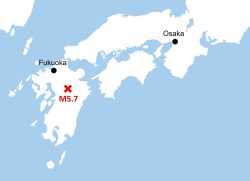
M5.7 Earthquake Hits Japan’s Kumamoto Pref., Measuring Upper 5 Intensity, No Tsunami Expected
JN ACCESS RANKING
-

Tokyo Economic Security Forum to Hold Inaugural Meeting Amid Tense Global Environment
-

Keidanren Chairman Yoshinobu Tsutsui Visits Kashiwazaki-Kariwa Nuclear Power Plant; Inspects New Emergency Safety System
-

Imports of Rare Earths from China Facing Delays, May Be Caused by Deterioration of Japan-China Relations
-

University of Tokyo Professor Discusses Japanese Economic Security in Interview Ahead of Forum
-

Japan Pulls out of Vietnam Nuclear Project, Complicating Hanoi’s Power Plans
